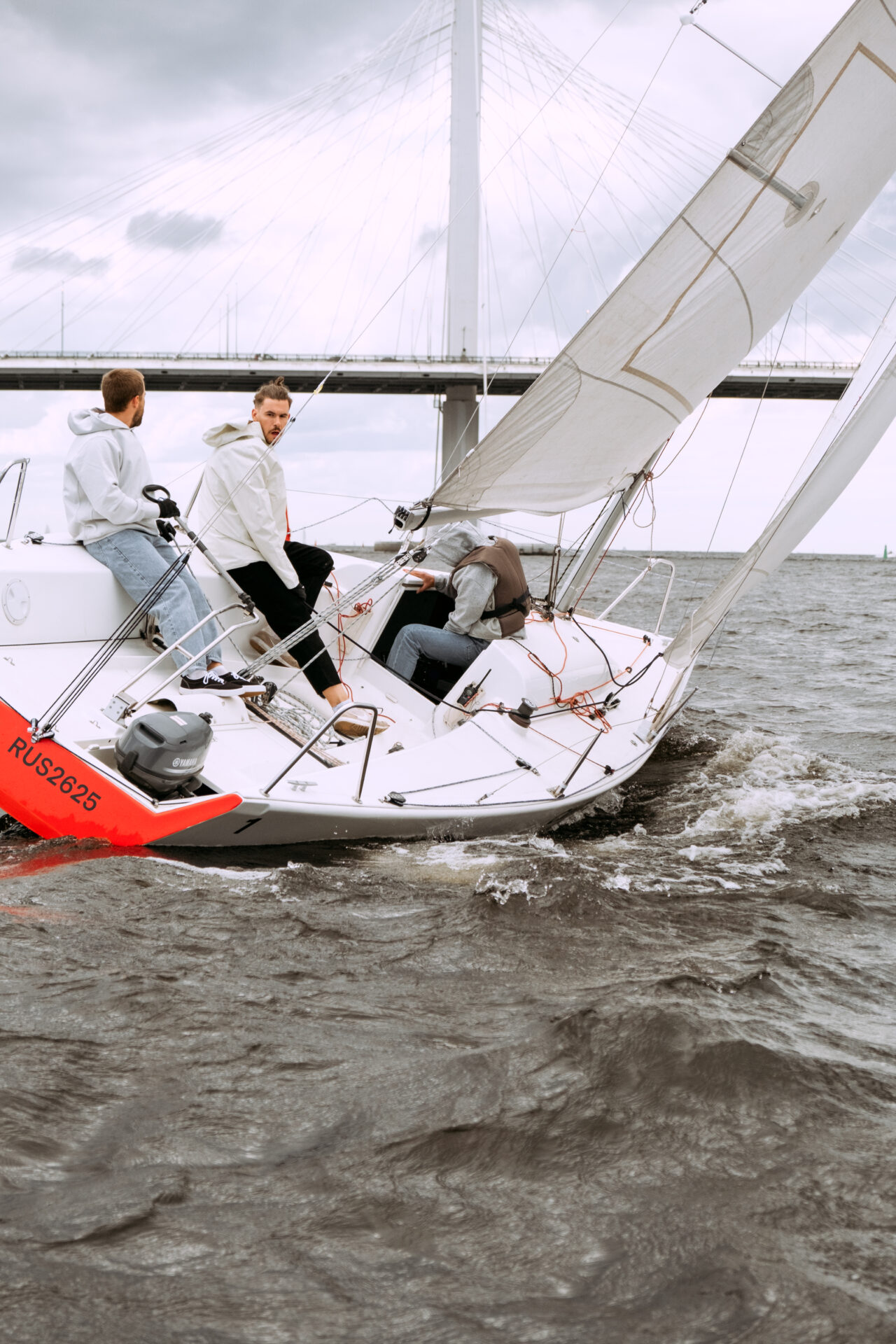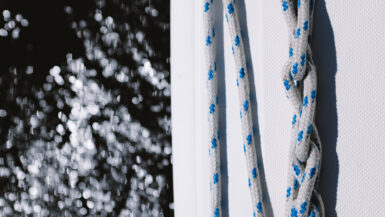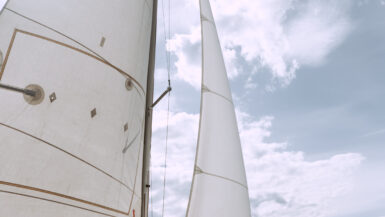Navigating the open waters has always been a thrilling experience for boating enthusiasts, but it can be equally challenging when faced with low visibility conditions. Poor weather and low light situations can make it difficult to accurately determine the position of other vessels, obstacles, and even the shoreline, potentially putting the safety of the crew and the boat at risk. In such scenarios, boat radar systems become a crucial piece of equipment that can significantly enhance the overall safety and navigation experience. In this article, we will delve into the world of marine radar technology and present the top five boat radar systems that can effectively aid in navigating through low visibility conditions. We will explore their key features, performance capabilities, and benefits, helping you make an informed decision when choosing the most suitable radar system for your vessel. So, embark with us on this journey as we navigate through the fog of uncertainty and shine a light on the best boat radar systems available on the market today.
Enhancing Safety at Sea: Best Boat Radar Systems for Foggy Conditions
When it comes to navigating through fog and low visibility conditions, investing in a high-quality boat radar system is crucial for ensuring safety and reducing the risks associated with poor visibility. In this section, we will explore the top five boat radar systems that are designed to perform exceptionally well in such challenging conditions. We will discuss their unique features, capabilities, and how they can significantly enhance your navigation experience, even during foggy conditions.
1. Garmin GMR Fantom 24
The Garmin GMR Fantom 24 is a solid-state Doppler radar that offers excellent target detection and tracking capabilities. With its 24-inch antenna and MotionScope technology, this radar system can detect and track moving targets in real-time. Its high-resolution imaging and MARPA tracking function enable users to easily identify small targets at a considerable distance, even in low visibility conditions. Additionally, the GMR Fantom 24 offers excellent compatibility with Garmin chartplotters, making it a great choice for boaters who use Garmin’s navigation system.
2. Furuno DRS4D-NXT
Furuno’s DRS4D-NXT is a solid-state pulse compression radar that delivers exceptional performance in foggy conditions. It features a 24-inch radome antenna, and its Target Analyzer function can identify and display potential hazards in different colors. The radar’s unique Bird Mode function also helps boaters locate birds hovering over fish schools, making it an excellent choice for fishermen. The Furuno DRS4D-NXT is compatible with NavNet TZtouch and TZtouch2 multi-function displays, ensuring seamless integration with Furuno’s ecosystem.
3. Raymarine Quantum 2
Raymarine’s Quantum 2 radar system is known for its superior short-range target detection and tracking abilities. Using CHIRP pulse compression technology and Doppler processing, the Quantum 2 can accurately identify and track targets, even in foggy or heavy rain conditions. Its lightweight design and simple installation process make it an ideal choice for small to medium-sized boats. The Quantum 2 radar also offers seamless integration with Raymarine’s Axiom and Axiom Pro multi-function displays.
4. Simrad HALO24
The Simrad HALO24 radar system is designed for a wide range of vessels, offering high-quality performance in low visibility conditions. With its 24-inch antenna and advanced pulse compression technology, the HALO24 provides exceptional target detection at both short and long ranges. Its VelocityTrack technology uses Doppler processing to identify and track moving targets, minimizing the risk of collisions. The HALO24 radar is compatible with Simrad NSS evo3 and NSO evo3 multi-function displays, making it a versatile option for boaters who use Simrad’s navigation systems.
5. B&G 4G Broadband Radar
Designed specifically for sailing enthusiasts, the B&G 4G Broadband Radar is an excellent choice for navigating through foggy conditions. Its advanced FMCW technology and low power consumption make it a reliable and energy-efficient option for sailboats. With its superior target separation and clutter rejection capabilities, the 4G Broadband Radar can accurately detect targets at both short and long ranges. The radar is compatible with B&G’s Zeus and Zeus3 multi-function displays, ensuring smooth integration for sailors who use B&G’s navigation solutions.
Each of these top five boat radar systems offers unique features and capabilities that can significantly enhance your navigation experience during foggy conditions. By investing in a high-quality radar system, you can increase your vessel’s safety, allowing you to navigate with confidence even in low visibility environments.
Top Marine Radar Brands: Comparing Features and Performance
When it comes to choosing a reliable boat radar system for navigating in low visibility, it is essential to consider the top marine radar brands that are known for their cutting-edge technology, performance, and features. In this section, we will compare the features and performance of some of the leading marine radar brands, helping you make an educated decision when selecting the perfect radar system for your vessel.
Garmin: A Pioneer in Marine Electronics
Garmin is a renowned brand in the world of marine electronics, offering a range of high-quality radar systems that are designed to provide excellent performance in low visibility conditions. Garmin’s radar systems, such as the GMR Fantom series, are equipped with advanced features like MotionScope technology, MARPA tracking, and compatibility with Garmin chartplotters, making them a popular choice among boating enthusiasts.
Furuno: A Legacy of Innovation in Marine Radar Technology
Furuno has been a leading provider of marine radar systems for decades, known for its innovative technologies and reliable performance. The Furuno DRS4D-NXT radar system is a perfect example of their commitment to excellence, offering advanced features like Target Analyzer, Bird Mode, and compatibility with NavNet TZtouch multi-function displays. These features make Furuno radar systems a top choice for boaters seeking superior performance in low visibility conditions.
Raymarine: A Trusted Name in Marine Navigation Systems
Raymarine is a well-established brand in the marine electronics industry, offering a range of radar systems that cater to the diverse needs of boaters. The Raymarine Quantum 2 radar system is an excellent option for those looking for exceptional target detection and tracking capabilities in low visibility environments. With its CHIRP pulse compression technology and seamless integration with Axiom multi-function displays, Raymarine radar systems are a reliable choice for navigating through fog and poor weather conditions.
Simrad: Advanced Radar Solutions for Versatile Applications
Simrad is a leading brand in marine electronics, offering high-performance radar systems that cater to various types of vessels. The Simrad HALO24 radar system is a versatile option for boaters, featuring advanced pulse compression technology and VelocityTrack capabilities for accurate target detection and tracking. With compatibility with Simrad’s NSS evo3 and NSO evo3 multi-function displays, Simrad radar systems provide a seamless navigation experience in low visibility conditions.
B&G: A Specialized Brand for Sailing Enthusiasts
B&G is a brand that caters specifically to the sailing community, offering radar systems designed with the unique requirements of sailboats in mind. The B&G 4G Broadband Radar is an energy-efficient option that features advanced FMCW technology for superior target separation and clutter rejection. Compatible with B&G’s Zeus and Zeus3 multi-function displays, B&G radar systems are a top choice for sailors navigating through foggy conditions.
By comparing the features and performance of these top marine radar brands, you can select the ideal radar system that meets your specific needs and ensures a safe and enjoyable boating experience even in low visibility environments.
Essential Radar Features for Low Visibility Navigation
When it comes to navigating in low visibility conditions, such as fog or heavy rain, having a radar system equipped with the right features is crucial for ensuring safety and ease of navigation. In this section, we will discuss the essential radar features that enhance a system’s performance and effectiveness in low visibility environments. By understanding these features, you can make a more informed decision when selecting the best boat radar system for your specific needs.
1. Advanced Target Detection and Tracking
A boat radar system must be capable of accurately detecting and tracking targets in low visibility conditions. Technologies such as solid-state Doppler radar, CHIRP pulse compression, and pulse compression technology help improve target detection and tracking capabilities. These features enable the radar system to identify and track other vessels, obstacles, and even birds, providing valuable information for safe navigation.
2. Superior Range Performance
Having a radar system that offers both short and long-range detection is crucial for navigating through fog and low visibility environments. Look for radar systems with antennas that provide excellent range performance, allowing you to detect targets at various distances. This enables you to maintain situational awareness and make informed decisions while navigating through challenging conditions.
3. Clutter Rejection and Target Separation
In low visibility conditions, the ability to differentiate between actual targets and false echoes or clutter is essential. A good radar system should have sophisticated clutter rejection and target separation capabilities, which help filter out unnecessary noise and provide a clear, uncluttered display of the surrounding environment. This makes it easier for you to identify and track potential hazards, ensuring safe navigation.
4. MARPA Tracking and VelocityTrack Technology
Modern boat radar systems often come with features such as MARPA (Mini Automatic Radar Plotting Aid) tracking and VelocityTrack technology. These advanced functions enable the radar system to automatically track multiple targets, display their speed, and predict their movements, making it easier for you to avoid potential collisions and navigate safely through low visibility conditions.
5. Compatibility with Multi-Function Displays
Seamless integration with your vessel’s existing navigation systems is essential for a smooth and efficient navigation experience. Look for radar systems that are compatible with popular multi-function displays, such as Garmin chartplotters, NavNet TZtouch, or Raymarine Axiom. This ensures that you can access all the radar information and features through a single, user-friendly interface, simplifying the navigation process in low visibility conditions.
By considering these essential radar features when choosing a boat radar system, you can select a model that offers optimal performance and reliability in low visibility navigation. This will not only enhance the safety of your vessel and crew but also provide you with the confidence to navigate through even the most challenging conditions.
How to Choose the Perfect Radar System for Your Vessel
Selecting the ideal radar system for your boat is a crucial decision that can significantly impact your navigation experience and safety, especially in low visibility conditions. In this section, we will guide you through the vital factors to consider when choosing the perfect radar system for your vessel. We will discuss the key aspects that make a radar system suitable for your specific needs, ensuring that you make a well-informed decision and invest in a radar system that provides unparalleled performance and reliability.
1. Assess Your Boating Needs and Activities
Before diving into the technical specifications of radar systems, it is essential to evaluate your boating activities and requirements. Are you an avid sailor, a fishing enthusiast, or a recreational boater? The type of boating you engage in will determine the features and capabilities you require from a radar system. For instance, if you frequently sail in foggy areas or participate in competitive sailing events, investing in a radar system with advanced target tracking and clutter rejection capabilities would be essential.
2. Consider the Size and Type of Your Vessel
The size and type of your boat play a significant role in determining the right radar system for your needs. Larger vessels may require more powerful radar systems with larger antennas for better range performance, while smaller boats may benefit from compact and lightweight radar systems that are easier to install and require less power consumption. Ensure that the radar system you choose is suitable for your boat’s size and type, offering a perfect balance between performance and practicality.
3. Evaluate the Radar’s Detection and Tracking Capabilities
As mentioned earlier, advanced target detection and tracking capabilities are crucial for navigating in low visibility conditions. Look for radar systems that incorporate technologies such as solid-state Doppler radar, CHIRP pulse compression, or pulse compression technology. These features enable the radar system to accurately identify and track targets, including other vessels, obstacles, and birds, providing valuable information for safe navigation in foggy conditions.
4. Examine Range Performance and Antenna Size
A radar system with a superior range performance is essential for navigating through low visibility environments. The antenna size and design can significantly impact the radar’s range capabilities. Ensure that the radar system you choose provides excellent short and long-range target detection, allowing you to maintain situational awareness and make informed decisions while navigating through challenging conditions.
5. Compatibility with Existing Navigation Systems
A seamless integration with your vessel’s existing navigation systems is vital for a smooth and efficient navigation experience. Ensure that the radar system you select is compatible with popular multi-function displays, such as Garmin chartplotters, NavNet TZtouch, or Raymarine Axiom. This will enable you to access all the radar information and features through a single, user-friendly interface, simplifying the navigation process in low visibility conditions.
6. Installation and Maintenance Requirements
Lastly, consider the installation and maintenance requirements of the radar system. Opt for a radar system that is easy to install, preferably with a straightforward mounting process and minimal wiring complexity. Additionally, ensure that the radar system requires minimal maintenance, as this will save you time and effort in the long run, allowing you to focus on enjoying your boating adventures.
By taking these factors into account, you can select the perfect radar system for your vessel, ensuring that you have the best possible navigation experience and safety, even in low visibility conditions. This careful consideration will not only enhance your overall boating experience but also provide you with the confidence to navigate through even the most challenging situations.
Installing and Maintaining Your Boat Radar System for Optimal Performance
Once you have selected the ideal radar system for your vessel, it is crucial to ensure proper installation and maintenance to achieve optimal performance and longevity. In this section, we will guide you through the essential steps for installing and maintaining your boat radar system, ensuring that it functions effectively and helps you navigate safely through low visibility conditions.
Step-by-Step Installation Process
Proper installation of your radar system is vital for its optimal performance. Follow these steps to ensure a smooth installation process:
- Select the appropriate mounting location: Choose a location on your boat that provides an unobstructed view of the horizon and minimizes interference from other electronic devices. Ensure that the radar system is mounted at a safe distance from people and is clear of any potential obstructions.
- Assemble and mount the antenna: Follow the manufacturer’s instructions to assemble the radar antenna and secure it to the mounting location using the provided hardware. Make sure the antenna is correctly oriented and securely fastened.
- Install the radar display: Mount the radar display unit in a location that is easily accessible and visible while navigating. Ensure that it is installed at a suitable viewing angle and securely fastened.
- Connect the power and data cables: Route the power and data cables from the radar system to the boat’s electrical system and navigation equipment. Be sure to follow the manufacturer’s guidelines for cable routing and connections, ensuring a secure and reliable connection.
Once the installation is complete, test the radar system to ensure that it is functioning correctly and that the display provides a clear and accurate representation of the surrounding environment.
Regular Maintenance Tips
Maintaining your boat radar system is essential for ensuring its optimal performance and longevity. Follow these maintenance tips to keep your radar system in top condition:
- Inspect the antenna regularly: Examine the radar antenna for signs of wear or damage, and ensure that it is securely fastened. Check for debris or bird nests that may obstruct the antenna’s rotation and remove them if necessary.
- Clean the radar display: Keep the radar display clean by wiping it with a soft cloth and a mild cleaning solution. Avoid using harsh chemicals or abrasive materials, as they may damage the display.
- Check cable connections: Periodically inspect the power and data cable connections to ensure they are secure and free from corrosion. Replace damaged cables immediately to prevent potential system failures or performance issues.
- Update the software: Ensure that your radar system is running the latest software version provided by the manufacturer. Regular software updates can improve performance and provide additional features that enhance your navigation experience.
- Perform a system self-test: Most radar systems have a built-in self-test function that can help you identify potential issues. Regularly perform a system self-test to ensure that your radar system is operating correctly and efficiently.
By following these installation and maintenance guidelines, you can ensure that your boat radar system functions at its optimal performance, providing you with accurate and reliable information for safe navigation in low visibility conditions. This meticulous care will not only enhance your overall boating experience but also instill confidence in your ability to navigate through even the most challenging situations.





Leave a reply